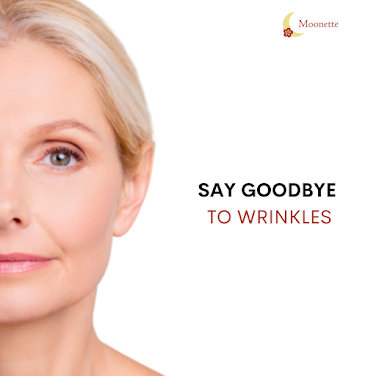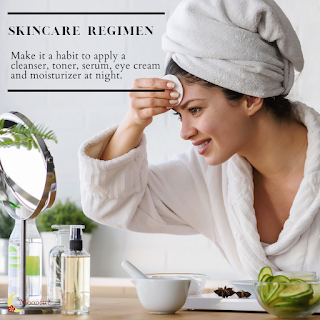Adding Aromatic essential Oils to your Natural Skincare Routine
Regular usage of natural skin care products can improve the health and appearance of your skin, particularly when they contain natural ingredients of 100% purity.
Aromatic essential oils
Aromatic plant oils have been used for thousands of years since ancient civilizations for their powerful therapeutic effects on the human body and mind. For instance, essential oils were used by the Egyptians, Greeks, Romans, Aztecs and Chinese for beautification (perfume and body care) as well as for treating physical and psychological problems.
Through our sense of smell, essential oils can influence our state of mind. In modern times, aromatic essential oils have been found effective in relaxing people and reducing their anxiety levels. In two recent studies, patients were exposed to orange and lavender essential oils before their dental treatments began.
The analysis results showed that in
comparison to the control group, both orange and lavender aromas not only reduced patients’ anxious feelings but also improved their mood (Lehrner J, Et Al, 2000; Kritsidima
M, Et Al, 2010).
The essential oil is, in a way, the heart and soul of a plant. Plants carry a distinctive scent which attracts bees and pollinating insects, whilst repelling unwelcome bugs at the same time, which works as a self-defense mechanism.
According to research findings, between 70 and 100 chemical components can be
found in a pure essential oil, depending on the species and the harvest season.
These concentrated oils are normally extracted by steam distillation from the barks,
flowers, leaves, seeds or roots of a particular
herb, plant or tree.
Nowadays, there are many essential oils sold online throughout the world. Calendula (marigold) oil, chamomile oil, eucalyptus oil, lavender oil, geranium oil, jasmine oil, rose oil, tea tree oil, frankincense oil, ginger oil, and carrot seeds oil are just a handful of examples.
When purchasing essential oils,
make sure that you choose a good brand which sells 100% plant-derived essential
oils. There
are synthetically made essential oils available on the market, so watch out! If you can afford it, it’s worth spending more on a good product with a certified quality.
How to use essential oils?
Essential oils are concentrated and powerful, hence you should use them in moderation. It is best to dilute essential
oils with plant oils for topical applications, especially if the potency of the oils can lead to irritation. Sweet almond oil, coconut oil, argan
oil, grape-seed oil, jojoba oil and olive oil are some good choices to use as base
oils.
For a first-time user, it
is recommended that you do a skin tolerance test to ensure that you don’t have
an allergic reaction or any irritation. Apply the oil on the crook of your
elbow and leave for 48 hours before proceeding to apply to your face, neck or
body. If
you notice a reaction (redness, itching, stinging, etc.), do not use the oil.
These are a few factors
to take into consideration before deciding to use any essential oil.
·
Don’t apply
essential oils to the eyes, eye contour or ears.
·
If you have
epilepsy, it is not recommended that you use essential oils.
·
Women during
pregnancy should avoid using some essential oils. According to aroma-therapist
Patricia Davis in her book ‘Aromatherapy
an A-Z’, basil, birch, jasmine, juniper, myrrh, thyme, rosemary, tarragon
and cedarwood are amongst some of the essential oils which
women in pregnancy are forbidden to use.
·
Store the oils
responsibly, making sure to keep out of reach of children younger than 6 years
old.
Uses of essential oils
There are many ways that essential oils can be used. Here we will focus on the most common applications.
·
Topical application: directly apply diluted essential oils to skin for antiseptic and anti-inflammatory effects, moisturisation,
pain relief or healing. For example, thyme, eucalyptus, lavender and lemon
are effective antiseptics for treating cuts, insect bites and spots. German
chamomile, Roman chamomile, and lavender oil are beneficial for eczema,
infected wounds, bumps and bruises as they help relieve inflammation.
·
Inhalation:
add a few drops of essential oils into a pot of hot
water and inhale for 5-10 minutes to treat symptoms of a cold and to calm the
nervous system. You can also use an essential oil diffuser to purify the air, relax
an overloaded mind and improve sleep quality. A few good oils you can use are chamomile, lavender, sandalwood,
frankincense, marjoram, bergamot and
rose oil. If
you suffer from respiratory allergies or asthma, avoid inhaling diffused
essential oils.
·
Massage:
essential
oils are easily absorbed via the skin into the bloodstream, affecting local and
general blood circulation. Adding aromatic essential oils to your massage oil
can enhance the benefits of massaging in many ways: improvement of the
appearance of skin, relief of muscular
pains and tension, boosts to blood circulation, and either relaxation or stimulation of the
body and mind.
Is
it safe to take essential oils orally?
Some aromatherapy practitioners believe that the ingestion of any essential oil is toxic. One supporter of this idea is the modern aromatherapy pioneer Madam Marguerite Maury, who developed the massage techniques from which today’s aromatherapy model has been established.
Her practical works in skin rejuvenation plus years of research and observations in the 1950s and 1960s led her to conclude that when used correctly, certain essential oils could promote healthier and younger-looking skin and hair.As she was concerned about the safety of ingesting
essential oils, she claimed that the safest way to use essential oils is via topical
applications. Likewise, the renowned aromatherapy expert and
writer Danièle Ryman holds the
same view;
she is also strongly against
the practices of taking essential oils internally.
However, according to the US Food and Drug Administration’s Generally Recognized As Safe list, some essential oils are safe to ingest. Toxic reactions are the result of taking contaminated oils or taking excessive doses.
Generally speaking, the
French are relatively passionate about essential oils and they are accustomed
to take essential oils internally (in a very small amount and with precaution).
For example, peppermint essential oil is classified as food grade. It is taken
to treat nausea and headaches,
and to promote concentration.
DIY - Essential Oil Skincare Recipe
Here I am sharing with
you an easy salt scrub recipe, so give it a go and try making it at home!
It contains lavender essential oil, one of my favourites. This oil smells divine and acts as a powerful stimulant and natural tranquilizer if you are feeling under the weather or suffering from physical fatigue or stress.
It is also renowned for
its antiseptic power and its ability to speed up the healing
process in cases of burnt skin, insect bites, cuts or infected wounds. It can
be used to treat skin conditions such as acne, athlete’s foot, dermatitis, eczema and psoriasis.
If it happens that
lavender is not to your liking, or you simply want to try using a
different oil, then opt for geranium, palmarosa, peppermint, Ylang Ylang, or sweet orange essential oils.
Note: Remember that some
essential oils are sensitive to sunlight when applied topically and that they can make your skin become photosensitive. Any
essential oils which are derived from citrus fruits can potentially be
photosensitive unless they are specially treated. If you prefer the scent of lemon, sweet orange, grapefruit, bergamot
or mandarin, keep in mind that it is best to use these oils at night rather
than during the day.
Recipe: Organic
Lavender Coconut Oil Salt Scrub
Ingredients:
·
1 cup of organic
virgin coconut oil (it is solid
but melts under low heat and has a lovely coconut smell)
·
1 cup of Epsom
salt (alternative: pink Himalayan salt or sea salt)
·
15 to 20 drops of organic lavender
essential oil
Method:
1.
Pour the coconut
oil and Epsom salt into a medium bowl and mix the two ingredients with a spoon
or an electric mixer till a paste-like texture is
formed.
2.
Add the lavender
essential oil into your mixture and gently stir the paste a few times till
mixed and you’re done!
- Store the scrub
in a glass pot or jar with a secure top and seal it firmly.
- Keep the scrub
in a cool, airy place, and avoid contact with heat and direct sunlight.
Usage:
The best time to use is right after coming out of
the shower. Apply a generous amount of the Lavender Coconut Oil Salt Scrub to your neck, shoulders, arms, chest, legs and
feet; then gently massage your skin in circular movements to remove dead skin. Remember
not to use this scrub on your face or any sensitive and delicate areas in
your body. Rinse off with warm or cold water when you have finished. You
should see the results straightaway; expect to see soft and glowing skin!
‘Scent is a potent wizard that transports us across thousands of miles
and all the years we have lived.’ – Helen Keller
‘Mind and Matter are mutually
enfolded projections of a higher reality which is neither matter nor
consciousness.’ – David Hoffman






Comments
Post a Comment